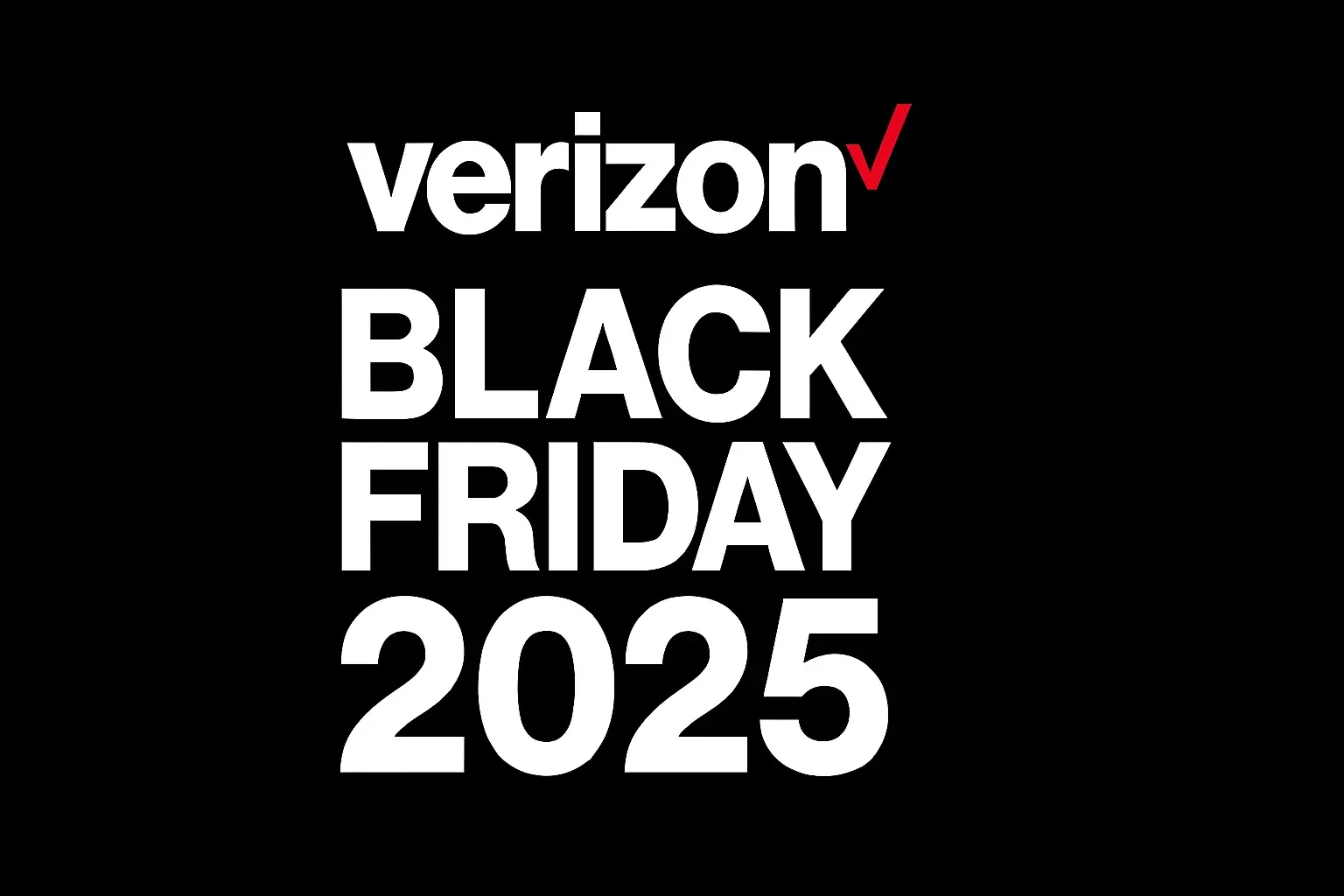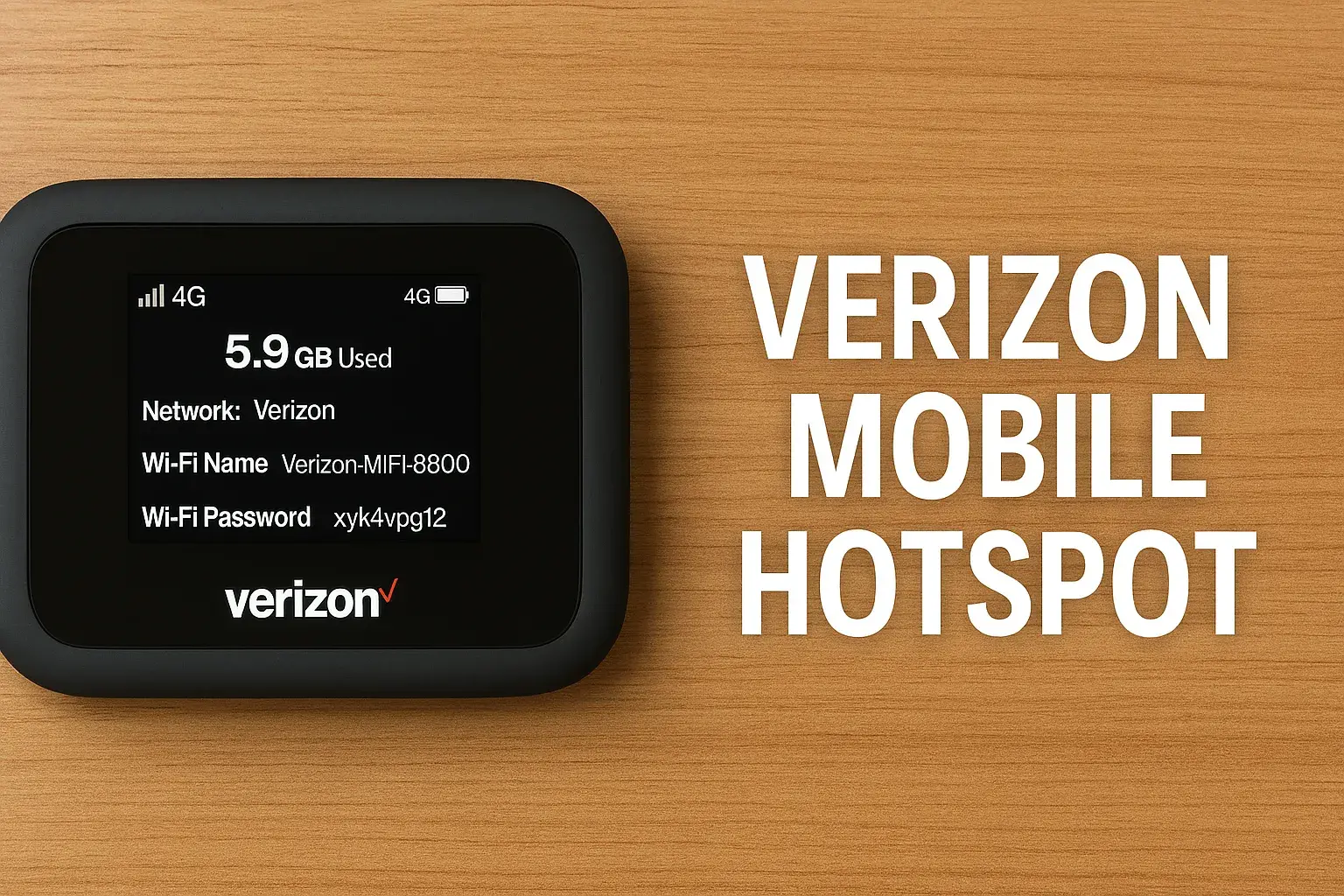Insider Secrets of Verizon Home Internet: An Honest Evaluation

Uncover the hidden truths about Verizon Home Internet. This honest evaluation dives deep into performance, pricing, and hidden fees, offering insider secrets to help you make an informed decision and avoid common pitfalls. Get the real story before you sign up.
Verizon Home Internet: An Honest Overview
In the ever-evolving landscape of home connectivity, Verizon has established itself as a major player, particularly known for its mobile network. However, their home internet offerings, which primarily consist of Fios (fiber-optic) and 5G Home Internet, often come with a premium price tag. This evaluation aims to peel back the layers of marketing and provide an unvarnished look at what Verizon Home Internet truly delivers in 2025. We’ll explore the nuances of their plans, the reality of their performance, the intricacies of their customer service, and crucially, the often-overlooked costs that can impact your monthly budget. Our goal is to equip you with the insider knowledge needed to determine if Verizon's high-speed internet is the right choice for your household, or if you should be looking elsewhere.
Verizon's approach to home internet is two-pronged: Fios, their established fiber-optic service, and the newer 5G Home Internet, leveraging their advanced wireless network. Each targets different needs and geographic areas, and understanding these distinctions is paramount. Fios is celebrated for its symmetrical speeds and reliability, making it a top contender in areas where it’s available. Conversely, 5G Home Internet offers a more flexible, often cheaper, and potentially faster-than-DSL alternative in areas underserved by fiber, relying on the strength and reach of Verizon's 5G infrastructure. This dual strategy means that your experience with Verizon will heavily depend on your specific location and the type of service available to you. This guide will delve into the specifics of both, offering a balanced perspective that goes beyond the glossy brochures.
Verizon Internet Plans and Pricing: Decoding the Details
Understanding Verizon's internet plans and their associated pricing is often the first hurdle for potential customers. While advertised prices might seem attractive, a closer inspection reveals a complex pricing structure that can lead to unexpected increases. It’s crucial to look beyond the initial promotional rates and understand the long-term costs, potential fees, and the value proposition for each tier of service. In 2025, Verizon continues to offer a variety of plans designed to cater to different user needs, from basic browsing to heavy streaming and gaming.
Fios Internet Plans: The Fiber-Optic Advantage
Verizon Fios is renowned for its fiber-optic technology, which offers significant advantages in terms of speed and latency. These plans are generally available in specific metropolitan areas where Verizon has invested in its fiber infrastructure. The key selling point of Fios is its symmetrical upload and download speeds, meaning your uploads are as fast as your downloads – a critical factor for video conferencing, cloud backups, and online gaming.
Fios 300 Mbps Plan
This plan is often positioned as an entry-level option for fiber. It typically offers 300 Mbps download and 300 Mbps upload speeds. While seemingly modest compared to higher tiers, 300 Mbps is more than sufficient for most households with 2-4 people who engage in regular streaming, web browsing, and social media use. It’s also a solid choice for remote work that involves video calls but not massive file transfers.
Fios Gigabit Connection
The flagship Fios plan, the Gigabit Connection, provides speeds of up to 940/880 Mbps download/upload. This is the ideal choice for power users, large households with multiple devices simultaneously streaming 4K content, avid online gamers, and professionals who regularly transfer large files. The near-symmetrical speeds ensure a seamless experience for all high-bandwidth activities. In 2025, Verizon continues to emphasize the reliability and speed of this offering, often bundling it with other Verizon services for potential savings.
Fios Pricing Nuances
Advertised Fios prices are often introductory rates that last for a specific period (e.g., 12 or 24 months). After this promotional period, the price typically increases. It's essential to ask about the "regular" or "non-promotional" rate for each plan. Additionally, Verizon often offers discounts for bundling Fios Internet with their mobile plans (Verizon Up) or with their TV services. While bundling can lead to savings, ensure the total cost still aligns with your budget and needs. Equipment rental fees, though sometimes waived initially, can also add to the monthly bill if not managed carefully.
5G Home Internet Plans: Wireless Speed and Flexibility
Verizon's 5G Home Internet is a compelling alternative, especially in areas where Fios is not available or for users seeking a more budget-friendly option. This service utilizes Verizon's 5G Ultra Wideband and LTE networks to deliver internet directly to your home wirelessly. The key advantages are its potential for high speeds (especially with Ultra Wideband), no data caps (on most plans), and often lower monthly costs compared to Fios.
5G Home Internet (Standard & Plus Tiers)
Verizon typically offers different tiers of 5G Home Internet. The "Standard" tier might offer speeds comparable to good cable internet, suitable for everyday use. The "Plus" tier, often leveraging the 5G Ultra Wideband network, promises significantly faster speeds, potentially reaching gigabit-like performance in ideal conditions. Speeds can vary based on network congestion, signal strength, and your proximity to a 5G tower. In 2025, Verizon continues to expand its 5G Ultra Wideband footprint, making these faster tiers more accessible.
5G Home Internet Pricing and Data
A major draw of 5G Home Internet is its pricing structure. Often, there are no data caps, meaning you can stream, download, and browse without worrying about exceeding a monthly data limit. The pricing is also frequently more stable than Fios, with less dramatic increases after promotional periods. Verizon also incentivizes 5G Home Internet by offering significant discounts for existing Verizon mobile customers, sometimes reducing the monthly cost to $25-$40. However, it's crucial to verify the exact speed tiers and pricing applicable to your specific address, as availability and performance can differ significantly.
Equipment and Installation Costs
For both Fios and 5G Home Internet, understanding equipment costs is vital. Fios typically requires a router, which can be rented from Verizon for a monthly fee or purchased outright. 5G Home Internet uses a proprietary Verizon 5G gateway device, which may also have a rental fee or an upfront purchase cost. Installation can be self-setup for 5G Home Internet, often included free, while Fios may require a professional installation, which can incur a one-time fee if not waived as part of a promotion. Always inquire about these potential upfront and recurring costs.
Verizon Internet Performance and Reliability: What to Expect in 2025
When choosing an internet provider, performance and reliability are paramount. Users want consistent speeds, minimal downtime, and a connection that can handle their daily digital demands. In 2025, Verizon's home internet services, Fios and 5G Home Internet, offer distinct performance profiles. Understanding these differences, along with potential limitations, is key to setting realistic expectations.
Fios Performance: The Fiber Advantage
Verizon Fios is built on a pure fiber-optic network, which is widely considered the gold standard for home internet. Fiber optics transmit data using light signals, offering superior speed, lower latency, and greater bandwidth capacity compared to traditional cable or DSL. This translates into a more robust and consistent internet experience.
Speed Consistency and Latency
Fios is celebrated for its symmetrical speeds, meaning upload and download speeds are nearly identical. For example, a 300 Mbps Fios plan delivers 300 Mbps both ways. This is crucial for activities like uploading large files, high-quality video conferencing, and live streaming. Latency, the time it takes for data to travel from your device to the server and back, is also exceptionally low with Fios. In 2025, this low latency makes Fios an excellent choice for competitive online gaming and real-time applications where milliseconds matter.
Reliability and Uptime
Fiber optic cables are less susceptible to interference from weather, electrical signals, and physical damage compared to copper wires. This inherent robustness contributes to Fios's high reliability and uptime. While no internet service is entirely immune to outages, Fios generally experiences fewer disruptions. Verizon's network infrastructure is also well-maintained, further contributing to its dependable performance. Anecdotal evidence and independent speed tests consistently place Fios among the most reliable internet services available.
Geographic Limitations
The primary limitation of Fios is its availability. Verizon has focused its fiber deployment on specific metropolitan areas, and the network is not universally accessible across the United States. If you live outside these designated Fios zones, this high-performance option is simply not an option.
5G Home Internet Performance: Wireless Innovation
Verizon's 5G Home Internet leverages the company's advanced wireless network. The performance of this service is heavily dependent on the type of 5G technology deployed in your area (5G Nationwide vs. 5G Ultra Wideband) and your proximity to cell towers.
Speed Variability
5G Home Internet performance can be more variable than Fios. While the 5G Ultra Wideband network can deliver impressive speeds, often rivaling or exceeding wired broadband in ideal conditions, these speeds can fluctuate. Factors such as signal strength, network congestion (especially during peak hours), and obstructions (buildings, trees) can impact the actual speeds you receive. In 2025, Verizon is actively expanding its 5G Ultra Wideband coverage, which is steadily improving the consistency of these higher speeds.
The "Standard" 5G Home Internet tier, which may rely more on 5G Nationwide or even LTE in some instances, offers more modest speeds, generally comparable to decent cable or DSL. This is usually sufficient for basic internet tasks but might struggle with multiple high-definition streams or demanding online activities.
Latency Considerations
While 5G technology has significantly improved latency compared to older wireless generations, it generally still has higher latency than fiber optics. For casual internet use, streaming, and most online gaming, the latency of 5G Home Internet is usually acceptable. However, for highly competitive gamers or professional applications requiring near-instantaneous response times, Fios or other fiber options might be preferable.
Reliability and Uptime
Wireless internet, by its nature, can be more susceptible to environmental factors and network congestion than wired connections. While Verizon has invested heavily in its network, occasional signal drops or slowdowns due to network load are possible. However, for many users, especially those who previously relied on slower DSL or unreliable cable, 5G Home Internet offers a significant upgrade in reliability and speed. The device provided by Verizon is designed to optimize signal reception, and the service typically comes with a grace period or a speed guarantee, allowing users to test its performance in their specific location.
Device and Placement Impact
The performance of 5G Home Internet is also influenced by the placement of the Verizon 5G gateway device within your home. Optimal placement, usually near a window facing the nearest cell tower, is crucial for maximizing signal strength and speed. Verizon often provides guidance on placement, and some users report better results by experimenting with different locations.
Comparing Performance: Fios vs. 5G Home Internet
In summary, for raw speed, consistency, and low latency, Verizon Fios remains the superior choice in areas where it's available. Its fiber-optic foundation provides a more predictable and robust internet experience. However, Verizon's 5G Home Internet is a strong contender, offering competitive speeds and greater flexibility, especially for those outside Fios service areas or seeking a more affordable wireless solution. In 2025, the gap in speed and reliability for 5G Home Internet is narrowing as Verizon continues to enhance its 5G network, making it an increasingly viable option for a wider range of users.
Verizon Internet Installation and Setup: A Step-by-Step Guide
The installation and setup process for Verizon Home Internet can vary significantly depending on whether you choose Fios or 5G Home Internet. Understanding these steps beforehand can help alleviate any confusion and ensure a smoother transition to your new service. In 2025, Verizon aims to streamline these processes, offering both professional and self-installation options.
Fios Installation: Professional vs. Self-Setup
Fios installation typically involves running fiber optic cables to your home and setting up the necessary equipment. While self-setup is sometimes an option for existing Fios customers moving to a new address, new installations almost always require a professional technician.
Step 1: Scheduling the Appointment
Once you've selected your Fios plan and completed the signup process, you'll be prompted to schedule an installation appointment. Verizon will offer available dates and time windows. It's advisable to book this as far in advance as possible, especially during peak demand periods.
Step 2: The Technician's Arrival
On the scheduled day, a Verizon technician will arrive at your home. They will assess the best location for the fiber optic entry point and the installation of the ONT (Optical Network Terminal), which converts the light signal to an electrical signal. They will also install the Fios Wi-Fi router.
Step 3: Running the Fiber Optic Cable
The technician will drill a small hole (if necessary) to run the fiber optic cable from the outside demarcation point to the ONT. They strive to minimize disruption and often conceal the wiring neatly.
Step 4: Setting Up the ONT and Router
The ONT is typically mounted on an interior wall, usually near where your internet will be used. The Fios router is then connected to the ONT. The technician will ensure both devices are powered on and functioning correctly.
Step 5: Network Configuration and Testing
The technician will configure your Wi-Fi network, set up your network name (SSID) and password, and test the internet connection on various devices. They will confirm that you are receiving the speeds associated with your chosen plan.
Step 6: Post-Installation Support
The technician will answer any questions you may have about your new service, the equipment, and how to manage your network. They will also provide you with information on how to access Verizon's customer support if needed.
Insider Tip: Discuss with the technician the optimal placement for your router to ensure the best Wi-Fi coverage throughout your home. Consider having them run additional Ethernet cables if you have specific devices that benefit from a wired connection.
5G Home Internet Installation: The Self-Setup Advantage
Verizon's 5G Home Internet is designed for easy self-installation, making it a more convenient option for many users. The process typically takes less than an hour.
Step 1: Receive Your Equipment
After ordering, Verizon will ship the 5G gateway device directly to your home. You'll receive instructions on how to set it up. The package usually includes the gateway, power adapter, and a quick start guide.
Step 2: Download the Verizon 5G Home App
The Verizon 5G Home app (available for iOS and Android) is your primary tool for setup and management. It guides you through the entire process, from finding the best placement for your gateway to optimizing your Wi-Fi signal.
Step 3: Find the Optimal Gateway Placement
The app will use your phone's sensors and GPS to help you locate the best spot in your home to receive the strongest 5G signal. This usually involves placing the gateway near a window, ideally facing the direction of the nearest Verizon 5G tower. The app provides real-time signal strength feedback.
Step 4: Connect and Power On the Gateway
Once you've found the optimal location, plug in the 5G gateway device. The app will prompt you to confirm when the device is powered on and connected to the Verizon network.
Step 5: Configure Your Wi-Fi Network
Using the app, you'll set up your Wi-Fi network name (SSID) and password. You can choose to use the default settings or customize them. The app also allows you to manage connected devices and perform speed tests.
Step 6: Test Your Connection
After setting up your Wi-Fi, the app will guide you through a speed test to confirm your internet connection is active and performing as expected. You can then connect your devices (laptops, smartphones, smart TVs) to your new Verizon 5G Home Internet network.
Insider Tip: Even after initial setup, periodically check the app for signal strength updates or if you notice a degradation in performance. Sometimes, repositioning the gateway slightly can make a noticeable difference.
Potential Installation Challenges and Solutions
While both processes are generally smooth, occasional issues can arise:
- Fios: If there are pre-existing fiber lines to your home from a previous installation, setup might be quicker. Complex wiring situations or difficult access points can sometimes lead to longer installation times or require additional technician visits.
- 5G Home Internet: In areas with weaker 5G signals or significant obstructions, achieving optimal speeds might be challenging. If the initial placement doesn't yield satisfactory results, try different windows or higher locations within your home. If performance remains consistently poor, it might indicate that your specific location is not ideal for 5G Home Internet, and you may need to consider alternative providers or plans.
Verizon's customer support is available to assist with any installation-related issues for both Fios and 5G Home Internet. It's always recommended to have your account information readily available when contacting support.
Verizon Internet Customer Service and Support: The Real Experience
Customer service is a critical, yet often overlooked, aspect of any internet service provider. When issues arise, the quality of support can significantly impact user satisfaction. Verizon's customer service for its home internet offerings has a mixed reputation. While many customers report positive interactions, others have encountered challenges. In 2025, understanding the landscape of Verizon's support channels and potential pitfalls is crucial.
Channels of Support
Verizon offers a multi-channel approach to customer support, aiming to provide assistance through various convenient methods:
- Phone Support: This is the traditional method for contacting customer service. Verizon has dedicated support lines for Fios and 5G Home Internet. Wait times can vary, and some users report being transferred multiple times before reaching a resolution.
- Online Chat: Available through Verizon's website and My Verizon app, online chat offers a convenient way to get quick answers to common questions or troubleshoot minor issues without having to make a phone call.
- My Verizon App: This mobile application is a powerful tool for managing your account, paying bills, checking service status, and accessing support resources. It often provides self-help guides and troubleshooting steps.
- Verizon Community Forums: A platform where users can ask questions, share experiences, and get advice from other Verizon customers and sometimes from Verizon representatives.
- Social Media: Verizon has a presence on platforms like Twitter, where they offer customer support. This can be a quick way to get attention for urgent issues.
- In-Store Support: Verizon stores can assist with account inquiries, equipment issues, and plan changes, though they may not be equipped to handle complex technical troubleshooting for home internet.
Common Customer Service Experiences
Based on user feedback and industry reviews, here's what you can generally expect:
Positive Aspects
- Knowledgeable Fios Technicians: For Fios installations and complex technical issues, the on-site technicians are often praised for their professionalism, expertise, and efficiency.
- Self-Service Tools: The My Verizon app and online portal are generally well-designed and provide robust self-service options for billing, account management, and basic troubleshooting.
- Promotional Support: When dealing with initial setup or promotional inquiries, customer service can be quite helpful in explaining offers and guiding customers through the signup process.
Potential Challenges
- Long Wait Times: Reaching a live agent via phone can sometimes involve extended wait times, particularly during peak hours or after major service disruptions.
- Tiered Support: Some users report that initial support agents may have limited troubleshooting capabilities, requiring escalation to higher tiers of support for more complex problems, which can lead to delays.
- Inconsistent Information: Occasionally, customers receive conflicting information from different support channels or representatives, leading to frustration.
- 5G Home Internet Specifics: As 5G Home Internet is a newer service, some support agents may be more familiar with Fios, potentially leading to a steeper learning curve for troubleshooting wireless-specific issues.
Tips for Effective Customer Service Interaction
To maximize your chances of a positive experience with Verizon customer service:
- Be Prepared: Have your account number, service address, and a clear description of the issue ready before contacting support.
- Document Everything: Keep a record of who you spoke with, the date and time of your interaction, and any reference numbers provided.
- Be Clear and Concise: Explain your problem directly and avoid jargon.
- Know Your Plan: Understand the terms and conditions of your service agreement, including any guarantees or service level agreements.
- Use the Right Channel: For billing inquiries, the My Verizon app or online portal is often the most efficient. For technical issues, phone support or online chat might be more effective.
- Escalate When Necessary: If you're not getting the resolution you need, politely ask to speak with a supervisor or a higher level of technical support.
In 2025, Verizon continues to refine its customer service operations. While challenges persist, proactive preparation and clear communication can significantly improve your experience when seeking support for your Verizon Home Internet service.
Verizon Internet Hidden Fees and Gotchas: Insider Secrets Revealed
One of the most frustrating aspects of signing up for any service is encountering unexpected fees that inflate the advertised price. Verizon Home Internet, like many providers, has its share of potential "hidden" costs and gotchas that consumers should be aware of. Understanding these can save you money and prevent unpleasant surprises on your monthly bill. Here are the insider secrets to watch out for in 2025.
1. Promotional vs. Regular Pricing
The Gotcha: Advertised prices for Verizon Fios and even some 5G Home Internet plans are almost always introductory promotional rates. These attractive prices are typically valid for a limited time, such as 12 or 24 months. After this period, the price jumps significantly to the standard, non-promotional rate.
Insider Secret: Always ask for the "regular" or "non-promotional" price of the plan you are considering. This is the price you will pay long-term. Factor this higher rate into your budget to avoid sticker shock. Also, inquire about the duration of the promotion.
2. Equipment Rental Fees
The Gotcha: Both Fios and 5G Home Internet require a router or gateway device. While sometimes waived for the first few months or as part of a bundle, Verizon typically charges a monthly fee for renting this equipment. For Fios, this is often a modem/router combo. For 5G Home Internet, it's the 5G gateway.
Insider Secret: Check if you can purchase your own compatible router (for Fios, this is sometimes possible, though less common now) to avoid monthly rental fees. If renting, confirm the exact monthly cost and ensure it's not bundled into a vague "service fee."
3. Installation Fees
The Gotcha: While 5G Home Internet often boasts free self-installation, Fios installations typically require a professional technician. This service often comes with an installation fee, which can range from $99 to $150 or more, depending on the complexity and current promotions. Sometimes, this fee is waived as part of a new customer offer.
Insider Secret: Always ask if the installation fee is negotiable or if there are any current promotions that include free installation. If you are moving and already have Fios, transferring service might have a different, potentially lower, fee structure.
4. Service Call Fees
The Gotcha: If you experience an issue with your internet service and need a technician to visit your home, Verizon may charge a service call fee. This fee is usually applied if the problem is determined to be with your inside wiring, customer-owned equipment, or if the issue is not covered under Verizon's network maintenance responsibilities.
Insider Secret: Thoroughly troubleshoot the issue yourself using online guides or customer support before scheduling a technician. If the problem is clearly with Verizon's equipment or network infrastructure, the service call should be free. Document your troubleshooting steps.
5. Early Termination Fees (ETFs)
The Gotcha: While Verizon has moved away from long-term contracts for many of its internet services, some Fios plans might still have contract requirements. If you cancel service before the contract term ends, you could be subject to substantial Early Termination Fees.
Insider Secret: Carefully review your service agreement for any mention of contracts or ETFs. If you are on a month-to-month plan, you can cancel anytime without an ETF, but be aware of any final prorated charges.
6. Data Overages (Less Common, but Possible)
The Gotcha: Most Verizon Home Internet plans, especially Fios and the higher tiers of 5G Home Internet, come with unlimited data. However, it's always wise to double-check the specific terms for the plan you choose, as older or specific regional plans might have data caps. Exceeding these caps can result in overage charges or speed throttling.
Insider Secret: Confirm "unlimited data" explicitly with your sales representative. If there are data caps, understand the cost of exceeding them and the speed reduction that occurs.
7. Bundling Benefits vs. Actual Savings
The Gotcha: Verizon heavily promotes bundling Fios Internet with their mobile plans or TV services to offer discounts. While these bundles can provide savings, sometimes the individual components are priced so high that the bundled discount still results in a higher overall cost than sourcing services from different providers.
Insider Secret: Do the math. Calculate the cost of each service individually from Verizon and then compare the bundled price. Also, compare the bundled price to what you would pay for similar services from other providers. Ensure the "savings" are genuine and not just a reduction from an inflated price.
8. Price Increases After Promotions End
The Gotcha: This is perhaps the most common "gotcha." The advertised price is temporary. When the promotional period ends, your bill will increase. This is not necessarily "hidden," but the impact can be significant if not anticipated.
Insider Secret: Set a reminder on your calendar a few months before your promotional period ends. At that point, contact Verizon to inquire about renewal offers or new promotions to lock in a lower rate, or be prepared to switch providers if the regular price is too high.
By being aware of these potential fees and "gotchas," you can approach your Verizon Home Internet signup with confidence, negotiate more effectively, and ensure that your monthly bill aligns with your expectations. Always read the fine print and ask clarifying questions.
Verizon Internet Alternatives and Comparisons: Finding the Best Fit
While Verizon offers compelling home internet options, it's essential to consider alternatives to ensure you're getting the best value, performance, and service for your specific needs. The "best" internet provider is highly dependent on your location, budget, and usage habits. In 2025, the competitive landscape includes major players like Xfinity (Comcast), Spectrum (Charter), AT&T, T-Mobile Home Internet, and various smaller regional providers.
1. Xfinity (Comcast)
Service Type: Primarily Cable (Coaxial), with some Fiber offerings in select areas.
Pros: Widely available, offers a range of speeds from basic to gigabit, often competitive pricing with introductory offers, extensive channel lineup for TV bundles.
Cons: Symmetrical speeds are rare (upload speeds are significantly slower than download), data caps are common (though unlimited options exist at an extra cost), customer service can be inconsistent.
Comparison to Verizon: Xfinity's cable internet is generally more widely available than Verizon Fios. If Fios isn't an option, Xfinity is a strong contender. However, for users prioritizing symmetrical speeds and lower latency for gaming or heavy uploads, Verizon Fios is superior. Xfinity's 5G Home Internet is a direct competitor to Verizon's 5G offering, with similar pros and cons regarding speed variability.
2. Spectrum (Charter)
Service Type: Primarily Cable (Coaxial), with some Fiber offerings.
Pros: Wide availability, no data caps on most plans, competitive pricing, often includes a modem free of charge.
Cons: Upload speeds are significantly slower than download speeds, gigabit speeds are less common than with Xfinity or Fios, customer service can be hit-or-miss.
Comparison to Verizon: Similar to Xfinity, Spectrum is a strong alternative where Fios is unavailable. Its main advantage over Xfinity and Verizon's cable/fiber offerings is the lack of data caps on standard plans. If you're a heavy data user and Fios isn't an option, Spectrum is worth considering. However, it doesn't offer the symmetrical speeds of Fios.
3. AT&T Internet
Service Type: Fiber (AT&T Fiber) and DSL (AT&T Internet) in different areas.
Pros: AT&T Fiber offers excellent symmetrical speeds and reliability, comparable to Verizon Fios. AT&T also has a strong presence in many areas.
Cons: AT&T Fiber availability is limited, similar to Fios. DSL service is significantly slower and less reliable than fiber or even good cable internet.
Comparison to Verizon: AT&T Fiber is a direct competitor to Verizon Fios, offering a very similar high-performance experience. The choice between them often comes down to availability in your specific area and current pricing/promotional offers. If neither fiber option is available, AT&T's DSL is generally not recommended for users needing more than basic internet functionality.
4. T-Mobile Home Internet
Service Type: 5G Wireless.
Pros: Often very affordable, unlimited data, easy self-setup, good speeds in areas with strong T-Mobile 5G coverage.
Cons: Performance can be variable depending on signal strength and network congestion, upload speeds are not symmetrical, latency can be higher than fiber.
Comparison to Verizon: T-Mobile Home Internet is a direct competitor to Verizon's 5G Home Internet. Both leverage 5G wireless technology. The "better" choice often depends on which carrier has a stronger 5G signal in your specific location. T-Mobile has historically focused on aggressive pricing, while Verizon may offer slightly more robust network infrastructure in some areas. Both are excellent alternatives to traditional cable or DSL where fiber is not available.
5. Other Providers (e.g., Frontier, CenturyLink, Local ISPs)
Service Type: Varies (Fiber, DSL, Cable).
Pros: Can offer competitive pricing or unique services, especially in niche markets. Some smaller ISPs might provide more personalized customer service.
Cons: Availability is highly localized, speeds and reliability can vary greatly.
Comparison to Verizon: These providers should be investigated if they are the only options or if they offer a compelling alternative (like fiber) in your area. Always compare their offerings directly against Verizon's plans for your address.
Comparison Table: Verizon vs. Key Competitors (Illustrative 2025 Data)
| Feature | Verizon Fios (Gigabit) | Xfinity (Gigabit) | Spectrum (Gigabit) | T-Mobile 5G Home Internet |
|---|---|---|---|---|
| Availability | Limited (Major Metro Areas) | Widespread (Cable) | Widespread (Cable) | Growing (5G Coverage) |
| Max Download Speed | ~940 Mbps | ~1000 Mbps | ~1000 Mbps | Variable (Up to ~300 Mbps+) |
| Max Upload Speed | ~880 Mbps (Symmetrical) | ~35 Mbps | ~20 Mbps | Variable (Not Symmetrical) |
| Data Caps | Unlimited | Common (with Unlimited Option) | None | Unlimited |
| Typical Latency | Very Low | Moderate | Moderate | Moderate to High |
| Introductory Price (Est.) | $70-$90/mo | $70-$90/mo | $70-$90/mo | $50-$75/mo |
| Regular Price (Est.) | $90-$110/mo | $90-$110/mo | $90-$110/mo | $50-$75/mo (Often with Auto-Pay/Bundle Discount) |
| Equipment Fee | Rental Fee Possible | Rental Fee Possible | Often Included | Included (Gateway) |
Note: Pricing and speeds are illustrative for 2025 and can vary significantly by location and promotional offers. Always verify details for your specific address.
Ultimately, the best way to find the right internet service is to:
- Check Availability: Determine which providers offer service at your address.
- Assess Your Needs: How many people use the internet? What activities do you perform (streaming, gaming, work)?
- Compare Pricing: Look beyond introductory offers and consider long-term costs, including fees and potential price increases.
- Read Reviews: Check local reviews for insights into reliability and customer service quality.
By conducting this due diligence, you can make an informed decision that best suits your household's internet requirements.
Verizon Internet: A Comprehensive Pros and Cons Summary
Choosing an internet provider involves weighing the benefits against the drawbacks. Verizon Home Internet, with its Fios and 5G offerings, presents a unique set of advantages and disadvantages. Understanding these points clearly will help you make a more informed decision in 2025.
Pros of Verizon Home Internet
- Superior Performance with Fios: For users in areas where Fios is available, the fiber-optic technology delivers exceptionally fast and symmetrical upload/download speeds, along with very low latency. This is ideal for demanding applications like online gaming, 4K streaming, and heavy video conferencing.
- Competitive Speeds with 5G Home Internet: In areas lacking fiber, Verizon's 5G Home Internet can offer speeds that are significantly better than traditional DSL and often comparable to or exceeding cable internet, especially with the 5G Ultra Wideband service.
- Unlimited Data on Most Plans: A significant advantage is that most Verizon Home Internet plans, including Fios and 5G Home Internet, do not have data caps. This allows for worry-free streaming, downloading, and browsing.
- Potential for Significant Savings for Verizon Mobile Customers: Existing Verizon mobile customers can often receive substantial monthly discounts on 5G Home Internet, making it a very attractive and affordable option.
- Easy Self-Installation for 5G Home Internet: The 5G Home Internet setup is designed to be user-friendly, allowing most customers to install it themselves quickly and easily using a mobile app.
- Reliability of Fios Network: The fiber-optic infrastructure of Fios is inherently robust and less prone to interference, leading to high reliability and consistent uptime.
- Growing 5G Network: Verizon continues to invest heavily in its 5G network, expanding coverage and improving speeds, which bodes well for the future performance of its 5G Home Internet service.
Cons of Verizon Home Internet
- Limited Availability of Fios: The biggest drawback for Fios is its limited geographic availability. It is primarily concentrated in select metropolitan areas, leaving many potential customers without access to this high-performance service.
- Variable Performance with 5G Home Internet: While 5G Home Internet can be fast, its performance is dependent on signal strength, network congestion, and environmental factors. Speeds and latency can fluctuate more than with wired connections.
- Higher Price Point for Fios: Verizon Fios plans, especially the higher-speed tiers, are often priced at a premium compared to some competitors, particularly cable internet providers.
- Promotional Pricing and Price Increases: Advertised prices for both Fios and 5G Home Internet are typically introductory and will increase after a promotional period, sometimes significantly.
- Potential Equipment Rental Fees: Both Fios and 5G Home Internet services may involve monthly fees for renting the necessary modem or gateway device, adding to the overall cost.
- Customer Service Can Be Inconsistent: While many customers have positive experiences, some report long wait times, tiered support issues, and difficulty resolving complex problems, particularly with the newer 5G service.
- Installation Fees for Fios: New Fios installations often incur a one-time installation fee, which can be substantial if not waived by a promotion.
By weighing these pros and cons against your personal circumstances, you can better determine if Verizon Home Internet aligns with your expectations and requirements.
Making the Decision: Is Verizon Home Internet Right for You?
Deciding whether Verizon Home Internet is the right choice hinges on a few critical factors: your location, your budget, and your specific internet usage needs. In 2025, Verizon offers two distinct paths – the premium Fios fiber-optic service and the flexible, wireless 5G Home Internet. Understanding which path is available to you and how it aligns with your priorities is the key to making an informed decision.
If you reside in an area where Verizon Fios is available, and you prioritize unparalleled speed, symmetrical upload/download capabilities, and rock-solid reliability for demanding tasks like competitive online gaming, professional content creation, or seamless 4K streaming across multiple devices, then Fios is likely an excellent, albeit potentially pricier, option. Its fiber-optic foundation provides a level of performance that is hard to beat.
Conversely, if Fios is not an option, or if you are seeking a more budget-friendly solution with the convenience of wireless connectivity, Verizon's 5G Home Internet warrants serious consideration. It's particularly appealing for existing Verizon mobile customers who can leverage significant discounts, making it one of the most affordable unlimited data plans on the market. For general web browsing, streaming, and moderate online activity, 5G Home Internet can provide a substantial upgrade over DSL and even some cable plans, provided you have good 5G Ultra Wideband coverage in your area. Its ease of self-installation is another major draw.
However, it's crucial to remain vigilant about the long-term costs. Always inquire about the regular, non-promotional pricing after the introductory period ends. Factor in potential equipment rental fees and installation charges for Fios. Compare these total costs with what alternative providers like Xfinity, Spectrum, or T-Mobile Home Internet offer in your specific location. Don't underestimate the value of customer service reviews; a slightly slower speed might be a worthwhile trade-off for consistently reliable support.
Ultimately, Verizon Home Internet can be a fantastic solution, but it's not a one-size-fits-all answer. By carefully evaluating your options, understanding the pricing structures, and considering the performance characteristics of both Fios and 5G Home Internet, you can confidently determine if Verizon is the right provider to keep you connected in 2025 and beyond.





